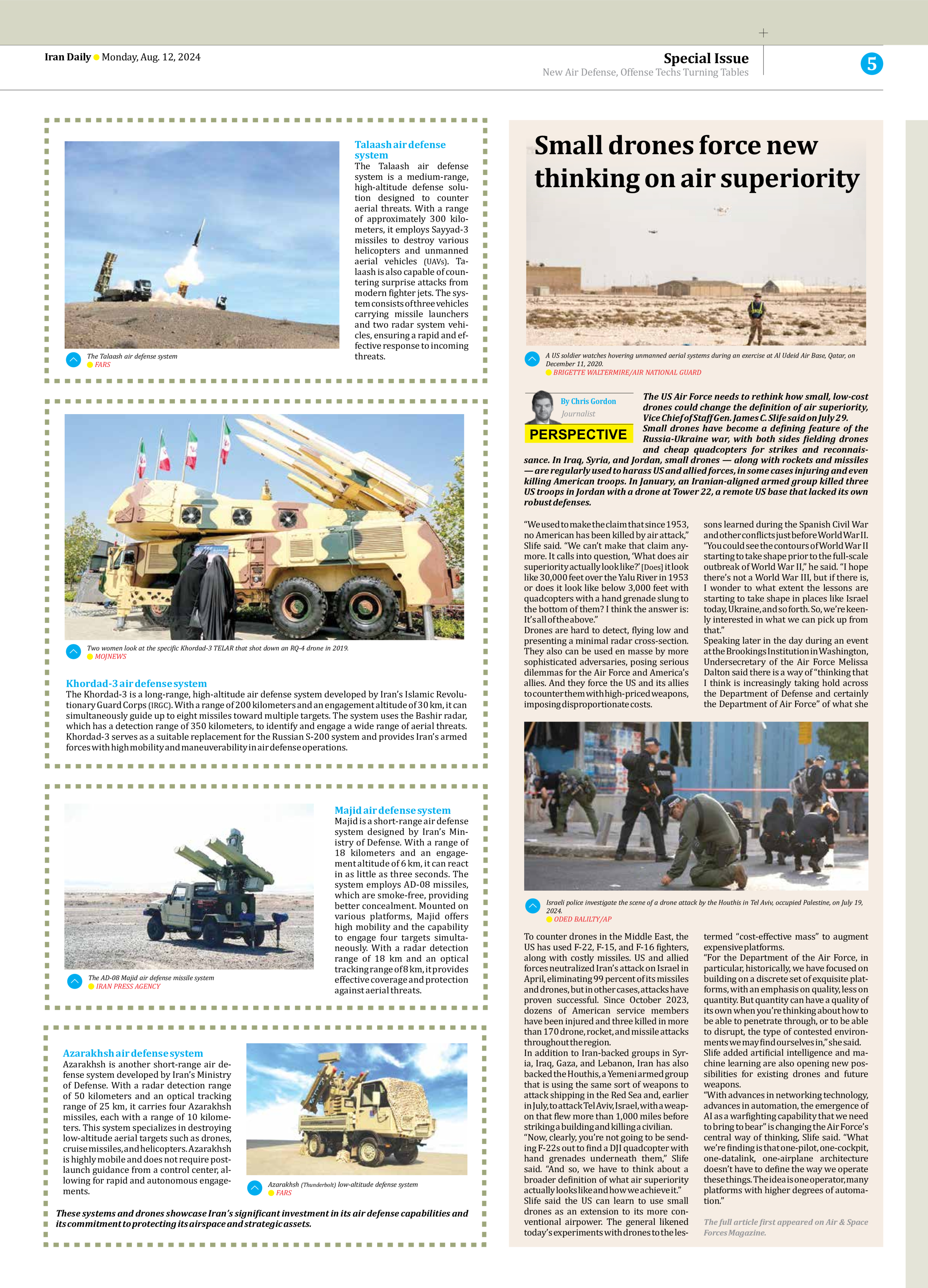
Small drones force new thinking on air superiority
The US Air Force needs to rethink how small, low-cost drones could change the definition of air superiority, Vice Chief of Staff Gen. James C. Slife said on July 29. Small drones have become a defining feature of the Russia-Ukraine war, with both sides fielding drones and cheap quadcopters for strikes and reconnaissance. In Iraq, Syria, and Jordan, small drones — along with rockets and missiles — are regularly used to harass US and allied forces, in some cases injuring and even killing American troops. In January, an Iranian-aligned armed group killed three US troops in Jordan with a drone at Tower 22, a remote US base that lacked its own robust defenses.
By Chris Gordon
Journalist
“We used to make the claim that since 1953, no American has been killed by air attack,” Slife said. “We can’t make that claim anymore. It calls into question, ‘What does air superiority actually look like?’ [Does] it look like 30,000 feet over the Yalu River in 1953 or does it look like below 3,000 feet with quadcopters with a hand grenade slung to the bottom of them? I think the answer is: It’s all of the above.”
Drones are hard to detect, flying low and presenting a minimal radar cross-section. They also can be used en masse by more sophisticated adversaries, posing serious dilemmas for the Air Force and America’s allies. And they force the US and its allies to counter them with high-priced weapons, imposing disproportionate costs.
To counter drones in the Middle East, the US has used F-22, F-15, and F-16 fighters, along with costly missiles. US and allied forces neutralized Iran’s attack on Israel in April, eliminating 99 percent of its missiles and drones, but in other cases, attacks have proven successful. Since October 2023, dozens of American service members have been injured and three killed in more than 170 drone, rocket, and missile attacks throughout the region.
In addition to Iran-backed groups in Syria, Iraq, Gaza, and Lebanon, Iran has also backed the Houthis, a Yemeni armed group that is using the same sort of weapons to attack shipping in the Red Sea and, earlier in July, to attack Tel Aviv, Israel, with a weapon that flew more than 1,000 miles before striking a building and killing a civilian.
“Now, clearly, you’re not going to be sending F-22s out to find a DJI quadcopter with hand grenades underneath them,” Slife said. “And so, we have to think about a broader definition of what air superiority actually looks like and how we achieve it.”
Slife said the US can learn to use small drones as an extension to its more conventional airpower. The general likened today’s experiments with drones to the lessons learned during the Spanish Civil War and other conflicts just before World War II.
“You could see the contours of World War II starting to take shape prior to the full-scale outbreak of World War II,” he said. “I hope there’s not a World War III, but if there is, I wonder to what extent the lessons are starting to take shape in places like Israel today, Ukraine, and so forth. So, we’re keenly interested in what we can pick up from that.”
Speaking later in the day during an event at the Brookings Institution in Washington, Undersecretary of the Air Force Melissa Dalton said there is a way of “thinking that I think is increasingly taking hold across the Department of Defense and certainly the Department of Air Force” of what she termed “cost-effective mass” to augment expensive platforms.
“For the Department of the Air Force, in particular, historically, we have focused on building on a discrete set of exquisite platforms, with an emphasis on quality, less on quantity. But quantity can have a quality of its own when you’re thinking about how to be able to penetrate through, or to be able to disrupt, the type of contested environments we may find ourselves in,” she said.
Slife added artificial intelligence and machine learning are also opening new possibilities for existing drones and future weapons.
“With advances in networking technology, advances in automation, the emergence of AI as a warfighting capability that we need to bring to bear” is changing the Air Force’s central way of thinking, Slife said. “What we’re finding is that one-pilot, one-cockpit, one-datalink, one-airplane architecture doesn’t have to define the way we operate these things. The idea is one operator, many platforms with higher degrees of automation.”
The full article first appeared on Air & Space Forces Magazine.







